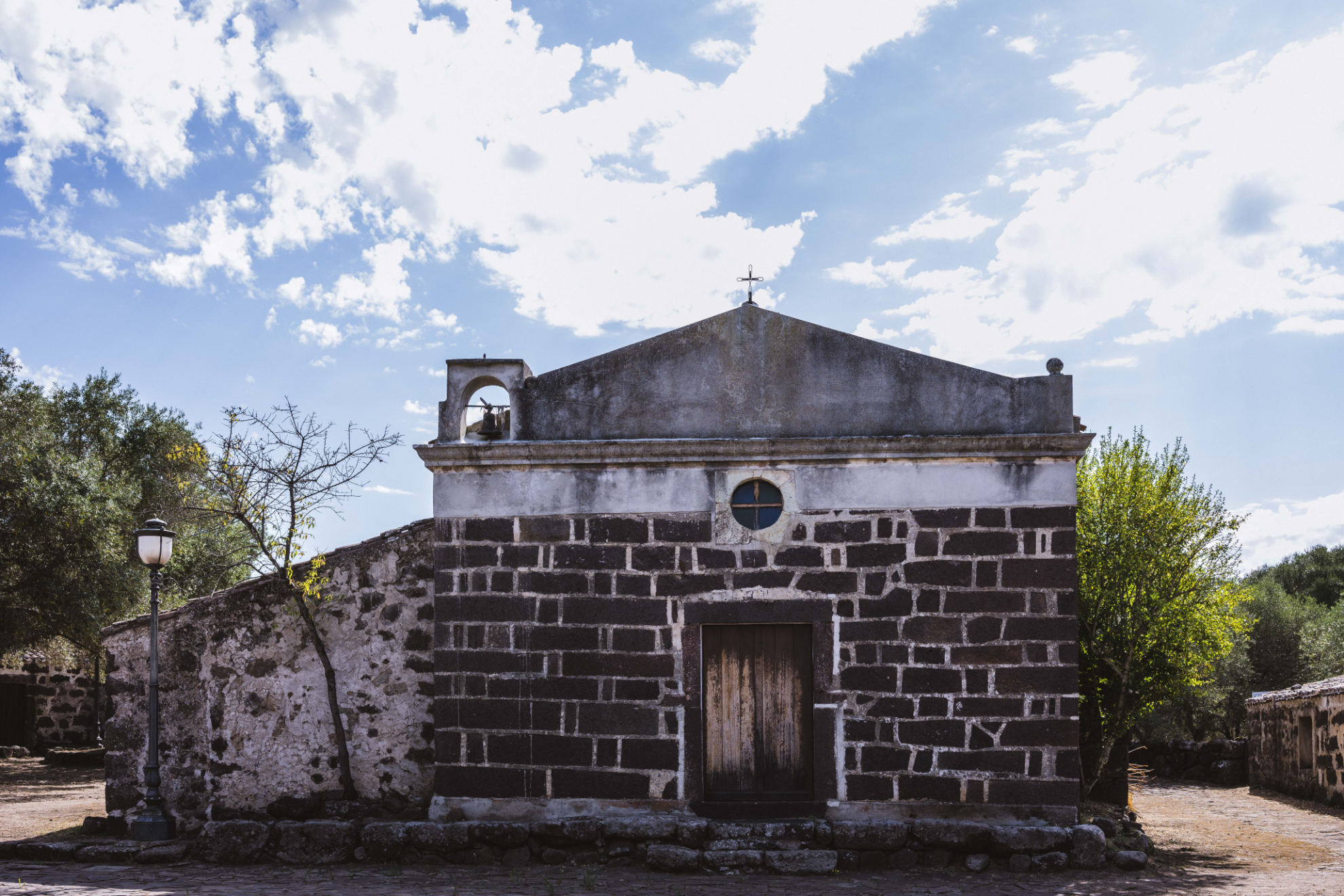The Nuragic tradition lives on in Sardinia in many places, but there is one where time has passed without leaving overly invasive tracks and where it is easier than elsewhere to imagine what life was like in the year 1000 BC: the Nuragic site of Santa Cristina.
The church of Santa Cristina | Ph. Valentina Sinis

Built on a basalt plateau in the province of Oristano, not far from Paulilatino, Santa Cristina is a place of great charm and equally great mystery. It is a place full of light softened by the colours and scents of the Mediterranean scrub, but with traces of deep darkness. It is a place of history and ancient stories, but also of imagination, because anyone who finds themselves in front of these beautifully preserved rock constructions cannot help but let their imagination run wild and feel as if they are part of another world and another era.
The well of Santa Cristina | Ph. Valentina Sinis

The well is the most famous architectural work: just over twenty steps covered by an architrave which gives them the shape of an inverted staircase, descending into the belly of the earth where the water is finally found. It is called the well of Santa Cristina due to its proximity to the rock church of the same name, dating back to the 11th century. From the outside, it has such a perfect trapezoidal shape that the Sardinian archaeologist Giovanni Lilliu called it “the culmination of the architecture of the temples of the waters”.
“Represents the pinnacle of water temple architecture”Giovanni Lilliu - archaeologist
From the light of the sun, we descend into the darkness of the earth, but at every equinox there is a phenomenon that has something of the sacred about it: the force of light illuminates the bottom of the well, reflecting on the water. And water was the protagonist of the cults that were once practiced here, because the well was linked to religious rites and pilgrimages that brought together entire communities.
The well has a perfect trapezoidal shape | Ph. Valentina Sinis

And the water cults were perhaps the maximum expression of protohistoric Sardinia. Even today, the water arrives in the tank and maintains a constant level. And still today the pilgrims who come here in honour of Santa Cristina on the occasion of the May novena, or in October for the Archangel Raffaele, can stay in the muristenes, the typical stone houses inside the village, surrounded by ancient olive trees.
Ph. Valentina Sinis

But for some scholars, Santa Cristina was not only a place linked to the rituals of water, it also had another function, namely to monitor the cycle of the moon over a period of eighteen years and thus predict eclipses. The researcher Arnold Lebeuf supports this idea in the work “The nuragic well of Santa Cristina”. Lebeuf is a rare exception because few people support this theory. But for any tourists arriving here, every idea is a springboard for diving into new impressions and ancient atmospheres.

